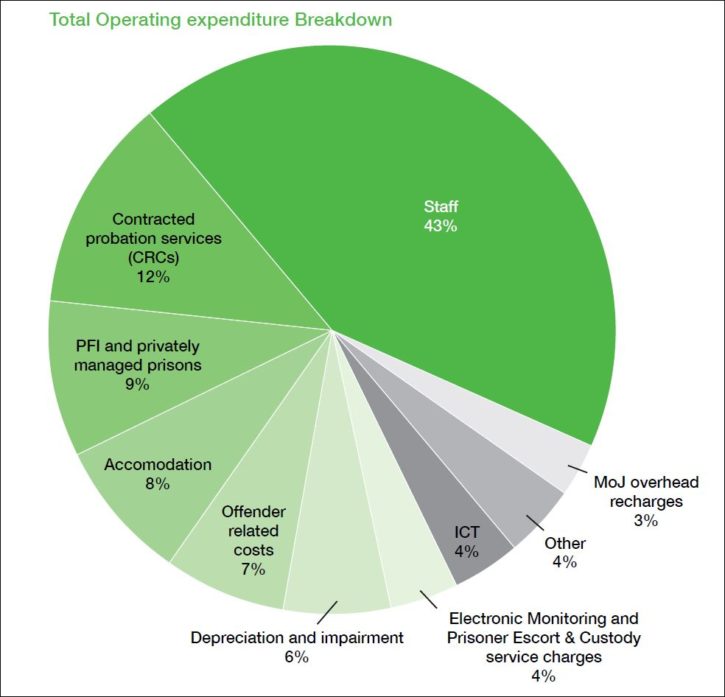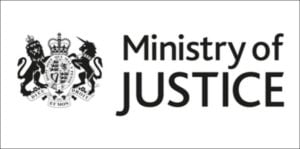10 things I learnt from the 2016 NOMS annual report
I don’t suppose the National Offender Management Service Annual Report and Accounts 2015–2016 (printed 7 July 2016) gets an especially wide readership, although some of the contents of this year’s report would be better known than usual — details of the prison refurbishment and prison reform programmes, for instance.
However, since regular readers know all about these issues, I’ve sought out 10 other nuggets which I hope will be of interest:
1: The prison population (mainly) remained below forecasted levels
However, there has been an increase in numbers of violent and sexual offenders sentenced to custody and also an older prison population. This has also caused a consequential effect on the probation caseload with a higher proportion of more serious offences requiring support from the NPS rather than the CRCs.
2: An increase in services for offenders with severe personality disorders
There are now community based services in all NPS divisions; new treatment services for men and women at 12 prisons; progression services in 12 prisons and seven approved premises and pilots of Mentalisation Based Therapy in 14 sites in the community.
3: Community sentence completion rates falling
There was “a slight drop” in completion rates for Community Orders and Suspended Sentence Orders. This may be a blip or an indication of the many problems in the new split probation service.
4: Problems with electronic tagging
The programme to introduce new technologies and a new contractual infrastructure with specialist partners has experienced problems over the year. In February, Ministers announced a reset to the programme which would see NOMS procuring proven off the shelf tracking technology as opposed to developing new, untested kit. (For a recent overview of electronic monitoring, see here.)
5: Prison staffing problems
Public sector prisons, particularly in London and the South East, have experienced high level of staff vacancies, requiring substantial use of “detached duty staff” (officers from other prisons). (For prison staffing problems, see this post on the Justice Committee ongoing concerns.)
6: A budget increase
Surprisingly (to me) net expenditure was the year was £3,960m, an increase of £210m on the previous year; breakdown is shown below:

7: Private prison problems
Three privately operated prisons (Doncaster, Dovegate & Northumberland) were highlighted in the report as requiring extra supervision from NOMS because of problems relating to violence, low numbers of prisoner working hours and an escape.
8: Improving safety
Body worn video cameras have been piloted in 22 prisons; the pilots are being evaluated but no detail given on what happens next.
9: Legal highs in prison
The report lists a large number of initiatives being introduced in an attempt to tackle the major problem of New Psychoactive Substances in prison. These include: a trial of body scanners, mobile phone blocking equipment and introducing legislation to combat the threat from drones bringing drugs into prisons.
10: Welsh “Titan” prison to be opened in “early 2017”
HMP Berwyn in North Wales will hold 2,106 prisoners (unless it becomes as over-crowded as the rest of the prison estate.)









4 Responses
WRT no.9, Legal Highs: If these are really the only measures planned, then we can expect to see the continuing effects of legal highs in prisons. Searches, MDTs and prohibition of mobile phones have done little to stem the flow up to now, yet MoJ continue to rely on these. When will NOMs realise that they cannot control the supply of drugs without vastly increasing staffing? And, since they won’t be doing that, they should focus more on reducing demand, which would have the happy corollary of reducing reoffending.
Hi Emily
I absolutely agree that demand reduction is the answer but very difficult to achieve without many more staff and better regimes. NOMS have recruited lots more staff but only marginal gains because so many experienced staff have left.
Thanks for your contribution
Russell
Was there anything in there Russell, I’ll read it promis! About multi faith or Christian chaplaincy?
Nothing I spotted, I’m afraid, Paul